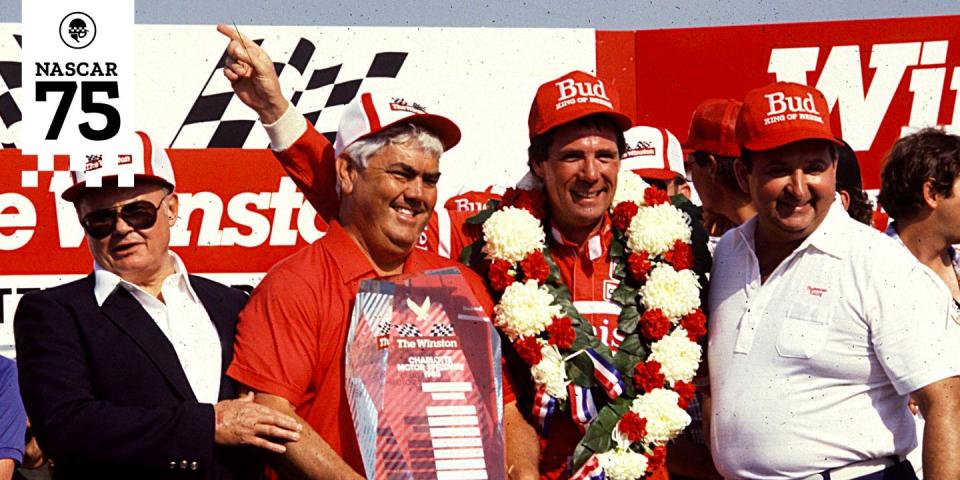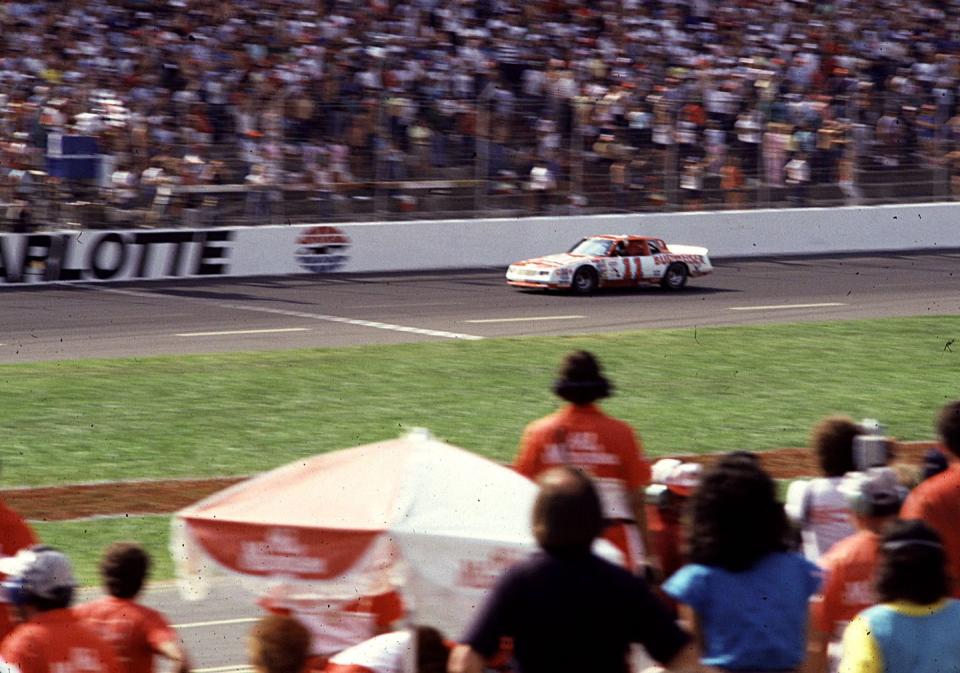Why First NASCAR All-Star Race in 1985 May Have Been the Most Controversial

NASCAR jumped into the All-Star even party in 1985 when series sponsor R.J. Reynolds Tobacco Co. found yet another way to expand its enormous presence in NASCAR.
It was would be open to only the 12 full-time drivers with victories in the previous season’s Winston Cup races.
Many people involved with NASCAR at the time still feel the winning engine in that first All-Star Race was illegal, that winner Darrell Waltrip made it blow up to escape post-race tech inspection.
NASCAR arrived late at the all-star party, finally showing up 52 years after Major League Baseball's debut showcase of the sport's best of the best in 1933.
The sanctioning body’s hesitation to promote such an event was based on its belief that every regular-season race was an all-star race. Management correctly felt that everybody who was anybody in stock car racing was already out there every weekend. Why create another exhibition among the same drivers in the same cars?
That logic held firm from the first Cup Series race in 1949 to 1985, when series sponsor R.J. Reynolds Tobacco Co. found yet another way to expand its enormous presence in NASCAR. With untold millions of dollars available that once had gone into radio/TV advertising, its Sports Marketing Enterprises team spent extravagantly to upgrade racing facilities.
RJR’s money boosted race-day purses and season-ending point funds, created special-incentive events, and sponsored a select number of teams. With marketing and promotion cash flowing like water, the SME team developed plans for the sport’s first all-star race.
Prior to the 1985 season, RJR officials announced that The Winston would be run in late May of that year at Charlotte Motor Speedway. It was would be open to only the 12 full-time drivers with victories in the previ
Harry Gant
ous season’s Winston Cup races. (It didn’t take NASCAR and RJR long to realize that fans wanted more drivers on the grid; in truth, it has reached the point today where almost everyone who’s ever raced in Cup can become eligible for an all-star berth).
That first 12-driver field featured Bobby Allison, Geoffrey Bodine, Dale Earnhardt, Bill Elliott, Harry Gant, Terry Labonte, Benny Parsons, Richard Petty, Tim Richmond, Ricky Rudd, Darrell Waltrip, and Cale Yarborough. Instead of standard qualifying, the pole was awarded to Labonte, the defending series champion; the rest of the grid was set based on each driver’s 1984 victory totals.
Except for a mandatory two-tire pit stop between laps 30-40, it was a standard 70-lap, 105-mile race with no gimmicks other than $10,000 bonuses for leading laps 20 and 55.

For the most part, the race was a snoozer. Waltrip led the first 19 laps, but Labonte eased by to lead lap 20 and earn the first $10,000 bonus. Waltrip then led 21-24, Labonte 25-35, and Waltrip again 36-37. Harry Gant took command at that point, leading from lap 38 and running away from the field, with Waltrip a distant second. For the rest of the afternoon, it seemed Gant would win relatively easily.
But Waltrip began to chip away at Gant. A tenth here; two-tenths there; better in Turns 1-2; even in Turns 3-4. Finally, with two laps remaining, Waltrip caught Gant in Turns 1-2 and passed him down the backstretch and drove away to win by several car lengths. Moments after taking the checkered flag, the engine in his No. 11 Junior Johnson-built Chevrolet erupted in an explosion of white smoke.
To this day—nearly for decades later—many people involved with NASCAR at the time still feel the winning engine was illegal, that Waltrip made it blow up to escape post-race tech. Naturally, he denies it and Johnson always did, too. But Waltrip did acknowledge that Johnson created the winning motor to run about 100 miles—including practice sessions—and not much farther.
“We built a special car that had been to the wind tunnel more than any we’d ever built,” Waltrip told a NASCAR audience years later. “There was an amazing amount of effort put into that race. Junior ground a set of rods that would run only as long as he thought they needed to run. He did the same thing with pistons and the crank. He used his experience to make that motor good for only as long as it needed to be.
“But that’s the chance you take with $200,000 on the line. It was a hand grenade motor and Junior held the pin. That was a ‘twisted-sister’ kind of car, one he built just for that race. In a lot of ways NASCAR kind of let their guard down when it came to that race. You could kind of do what you want to do.
Waltrip said Junior came on their radio in the final laps and asked whether he wanted to win $200,000 or $70,000 for second. “When I told him I wanted that $200,000, he said, ‘Well, boy, you’d better get up on that wheel and go after Harry.’
“So, I did.”

 Yahoo Autos
Yahoo Autos 